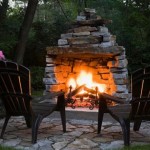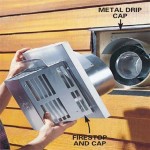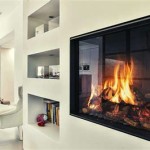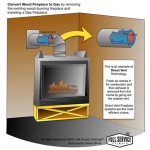Fireplace Mirror Ideas: Enhancing Ambiance and Space
Fireplace mirrors, strategically positioned above or beside a fireplace, serve both aesthetic and functional purposes. They act as focal points, amplify natural light, and create an illusion of spaciousness within a room. The design possibilities are abundant, ranging from sleek, modern statements to rustic, traditional accents. The selection of the right mirror requires careful consideration of several factors, including the existing décor, the size and style of the fireplace, and the desired impact on the overall room ambiance.
The placement of a mirror in relation to the fireplace is also crucial. Traditionally, mirrors are hung directly above the mantelpiece, but alternative placements, such as flanking the fireplace with two smaller mirrors, can also be effective. The height and width of the mirror should be proportionate to the fireplace, ensuring a balanced and harmonious visual appeal. A mirror that is too small may appear insignificant, while one that is too large can overwhelm the space.
Reflecting Light and Expanding Perceptions
One of the primary benefits of incorporating a mirror into a fireplace design is its ability to reflect light. Natural light entering a room is amplified by the mirror’s reflective surface, brightening the space and making it feel more open. This is particularly advantageous in rooms with limited natural light or in darker corners that would otherwise appear gloomy. The reflected light can also highlight architectural details and other decorative elements in the room, drawing attention to specific features and enhancing the overall aesthetic.
Beyond simply reflecting light, a mirror can also create a visual illusion of increased space. This effect is particularly useful in smaller rooms, where a large mirror can make the room feel significantly larger and more airy. By reflecting the opposite wall, the mirror effectively doubles the perceived size of the room, creating a sense of depth and openness. The strategic placement of the mirror to reflect a window or another light source can further enhance this effect.
The choice of mirror material and finish can also contribute to the desired lighting effect. Mirrors with beveled edges, for example, refract light in a unique way, creating a subtle shimmer that adds visual interest. Antique or smoked mirrors can diffuse light more softly, creating a warmer and more inviting atmosphere. Clear, frameless mirrors offer maximum reflectivity and a modern, minimalist appeal.
Complementing Architectural Styles
The style of the fireplace mirror should complement the architectural style of the room and the design of the fireplace itself. A traditional fireplace, with its ornate carvings and classic lines, would benefit from a mirror with a similarly traditional frame, perhaps featuring intricate detailing or a rich, dark wood finish. Conversely, a modern fireplace, with its clean lines and minimalist design, would be better suited to a sleek, frameless mirror or one with a simple, metallic frame.
For rustic or farmhouse-style rooms, a mirror with a distressed wood frame or a galvanized metal frame can add a touch of character and authenticity. Repurposed materials, such as old barn wood or reclaimed metal, can also be used to create unique and eye-catching mirror frames that perfectly complement the rustic aesthetic. The textures and colors of these natural materials add warmth and visual interest to the space.
In contemporary settings, mirrors with geometric shapes and bold designs can serve as striking focal points. A large, round mirror, for example, can soften the sharp lines of a modern fireplace and create a sense of balance. Alternatively, a rectangular mirror with a thin, black metal frame can reinforce the clean, minimalist aesthetic of a contemporary space. The key is to choose a mirror that complements the overall design scheme and enhances the visual appeal of the room.
Consider the colors in the room when selecting a mirror frame. A frame that matches or complements the wall color can create a cohesive and harmonious look. Alternatively, a contrasting frame can add a pop of color and create visual interest. For example, a gold frame can add a touch of glamour to a room with neutral walls, while a silver frame can enhance the cool tones of a blue or gray room.
Mirror Frame Materials and Design Elements
The material and design of the mirror frame play a significant role in its overall aesthetic appeal and its ability to integrate seamlessly into the room's décor. A wide range of materials are available, each offering its own unique characteristics and advantages. Wood frames are a popular choice, offering warmth, versatility, and the ability to be stained or painted to match any color scheme. Metal frames provide a sleek and modern look, while glass or acrylic frames offer a minimalist and almost invisible appearance.
Wood frames can be crafted from a variety of wood species, each with its own distinct grain pattern and color. Oak frames are durable and classic, while maple frames offer a lighter and more contemporary look. Cherry frames provide a rich, warm tone, while walnut frames exude elegance and sophistication. The choice of wood species will depend on the desired aesthetic and the overall color palette of the room.
Metal frames are often made from materials such as stainless steel, aluminum, or iron. Stainless steel frames are durable and resistant to corrosion, making them ideal for bathrooms or other damp environments. Aluminum frames are lightweight and versatile, while iron frames offer a more rustic and industrial look. The finish of the metal frame can also vary, from polished and shiny to brushed and matte, depending on the desired effect.
The design elements of the mirror frame can also significantly impact its overall appearance. Ornate carvings, intricate moldings, and decorative accents can add a touch of elegance and sophistication to a traditional frame. Simple, clean lines and minimalist designs are more appropriate for modern frames. The size and shape of the frame should also be carefully considered, ensuring that it is proportionate to the size of the mirror and the overall dimensions of the fireplace.
Frameless mirrors offer a clean and minimalist aesthetic that can seamlessly blend into any décor. These mirrors typically feature polished edges for a finished look and can be mounted directly to the wall using adhesive or mounting hardware. Frameless mirrors are a popular choice for modern and contemporary spaces, as they offer a sleek and understated elegance.
Alternative Mirror Placements and Styles
While the traditional placement of a mirror above the fireplace mantel is a common and effective approach, alternative placements can offer unique and visually interesting results. Flanking the fireplace with two smaller mirrors, for example, can create a symmetrical and balanced look. This approach is particularly effective in rooms with high ceilings, as it helps to draw the eye upwards and create a sense of grandeur.
Another alternative is to place a large mirror on the wall adjacent to the fireplace. This placement can be particularly effective in smaller rooms, as it can create the illusion of increased space and depth. By reflecting the opposite wall, the mirror effectively doubles the perceived size of the room, making it feel more open and airy.
Leaning a large mirror against the wall behind the fireplace is another option that can add a touch of casual elegance to the space. This placement is particularly well-suited to bohemian or eclectic décor styles, as it creates a relaxed and informal atmosphere. The mirror can be angled slightly to reflect light and create visual interest.
In terms of mirror styles, antique mirrors offer a unique and timeless appeal. These mirrors typically feature distressed glass and tarnished frames, adding a touch of character and history to the space. Antique mirrors can be particularly effective in vintage or farmhouse-style rooms, as they complement the overall aesthetic and add a sense of authenticity.
Smoked or tinted mirrors offer a softer and more diffused reflection, creating a warmer and more inviting atmosphere. These mirrors can be particularly effective in bedrooms or living rooms, as they create a sense of relaxation and comfort. The tint of the mirror can also be chosen to complement the color palette of the room.
Ultimately, the choice of mirror placement and style will depend on the individual preferences and the overall design scheme of the room. The key is to experiment with different options and find what works best to enhance the ambiance and visual appeal of the space.

5 Top Tips For Hanging Mirrors Above Fireplaces Living Fires

4 Ultra Modern Mirror Ideas Sg Interior Designers Previously Overmantels
:max_bytes(150000):strip_icc()/271342800_619280975946855_5866172257895318662_n-f6b2756c1768481b9b258f56fe44d13a.jpg?strip=all)
Design Guide To Putting A Mirror Over The Fireplace

10 Oversized Mirrors You Will Love Mirror Above Fireplace Mantle Decor Over

4 Ultra Modern Mirror Ideas Sg Interior Designers Previously Overmantels

35 Mirror Above Fireplace Ideas For A Beautiful Look Nikki S Plate

Mirror Above Fireplace 8 Styling Ideas Havenly Blog Interior Design

Mirror Above Fireplace 8 Styling Ideas Havenly Blog Interior Design

From Candles And Shelves To Mirrors Succulents Refresh Your Fireplace Mantel With Corbels Rustic Mantels Design

Fireplace Mantel Decor Ideas Three Ways To Style Your








